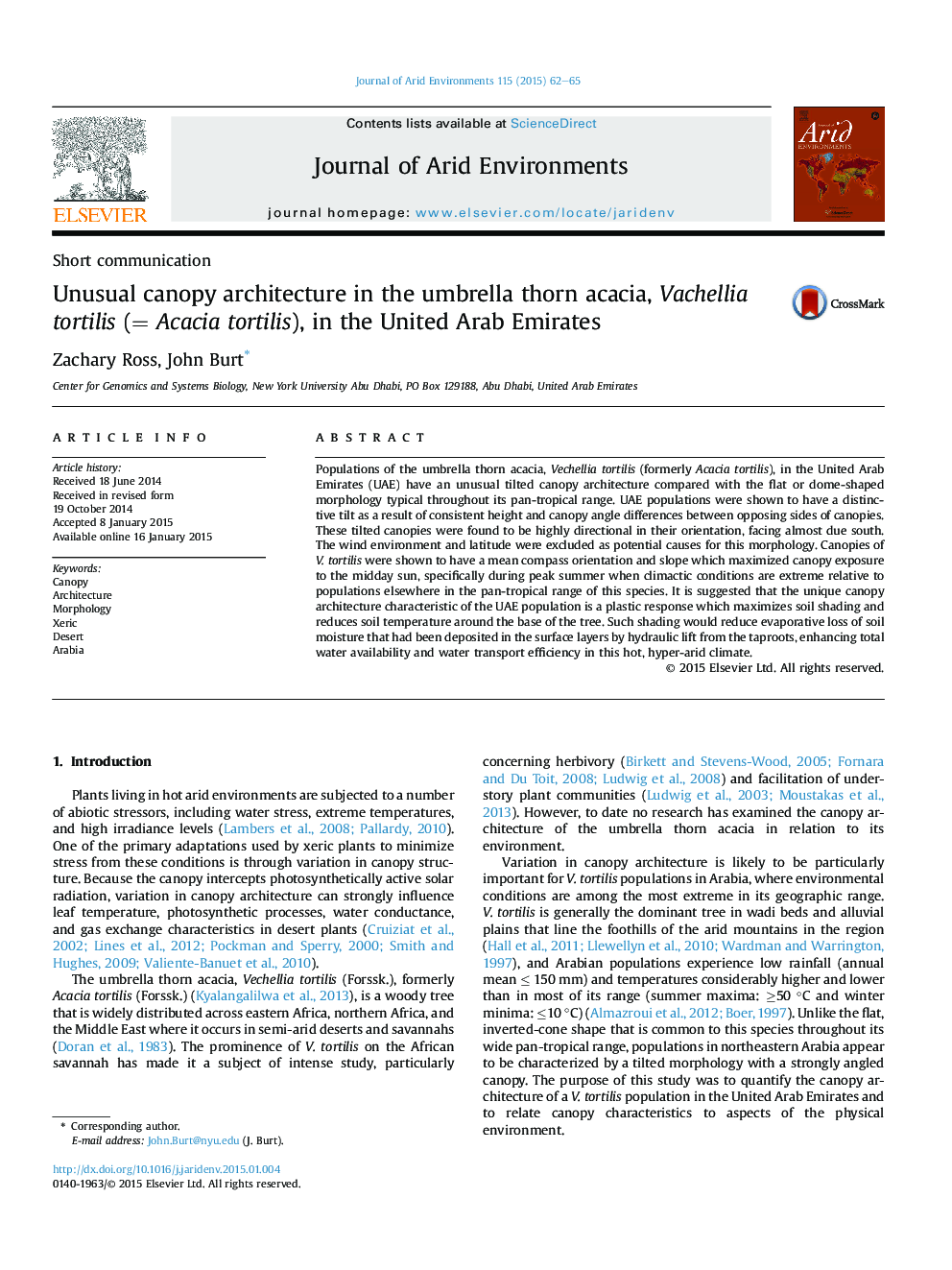| Article ID | Journal | Published Year | Pages | File Type |
|---|---|---|---|---|
| 4392932 | Journal of Arid Environments | 2015 | 4 Pages |
•Umbrella thorn acacia in the United Arab Emirates have unusual canopies.•UAE acacia canopies have a distinct tilt with consistent slope and direction.•UAE acacia face the midday summer sun, shading soils near the roots.•Shading reduces soil temperatures and likely reduces evaporative water loss.•This canopy architecture is likely a response to the extreme environment of the UAE.
Populations of the umbrella thorn acacia, Vechellia tortilis (formerly Acacia tortilis), in the United Arab Emirates (UAE) have an unusual tilted canopy architecture compared with the flat or dome-shaped morphology typical throughout its pan-tropical range. UAE populations were shown to have a distinctive tilt as a result of consistent height and canopy angle differences between opposing sides of canopies. These tilted canopies were found to be highly directional in their orientation, facing almost due south. The wind environment and latitude were excluded as potential causes for this morphology. Canopies of V. tortilis were shown to have a mean compass orientation and slope which maximized canopy exposure to the midday sun, specifically during peak summer when climactic conditions are extreme relative to populations elsewhere in the pan-tropical range of this species. It is suggested that the unique canopy architecture characteristic of the UAE population is a plastic response which maximizes soil shading and reduces soil temperature around the base of the tree. Such shading would reduce evaporative loss of soil moisture that had been deposited in the surface layers by hydraulic lift from the taproots, enhancing total water availability and water transport efficiency in this hot, hyper-arid climate.
